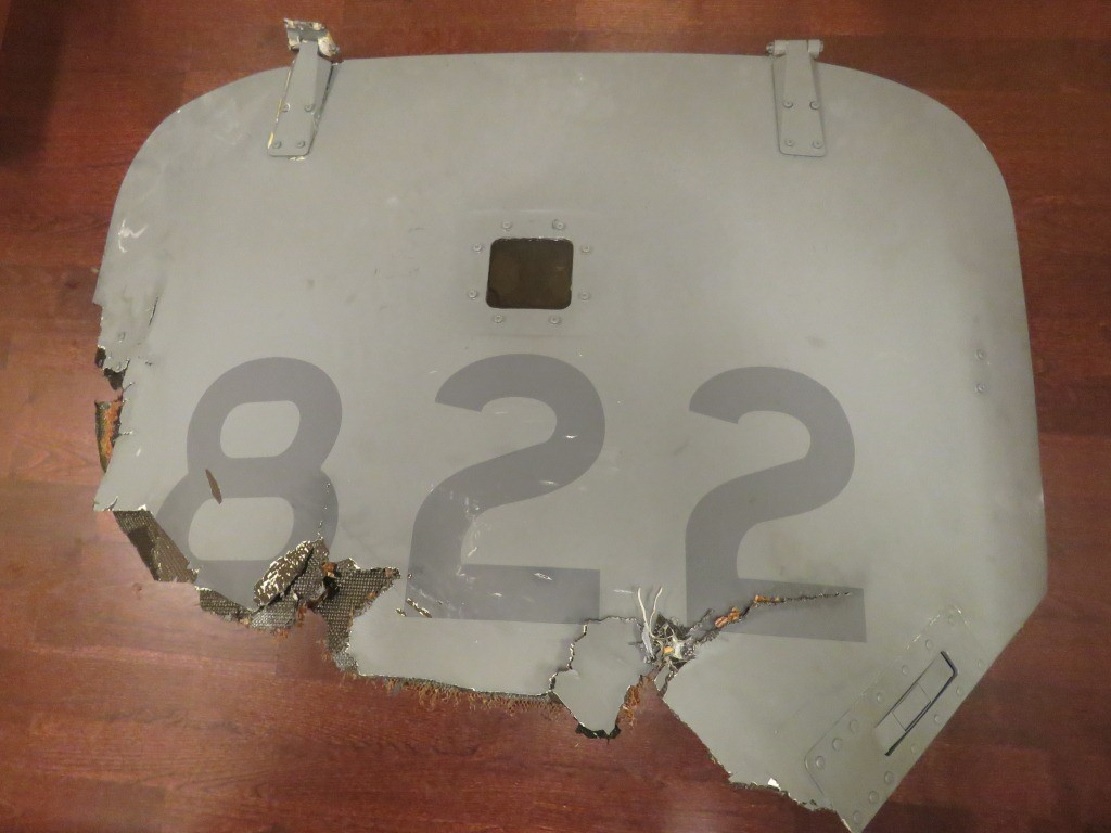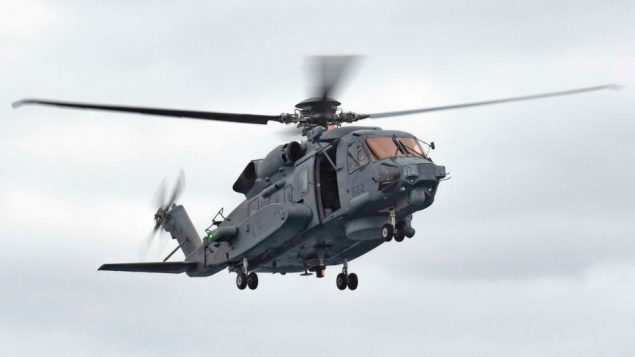Following an as yet unexplained crash of a miltary CH-148 Cyclone helicopter, the Canadian Forces placed the entire Cyclone fleet on an operational pause. The crash of the aircraft dubbed ‘Stalker-22’, occurred on April 29 as it was returning to its ship the HMCS Fredericton which was on a NATO mission near Greece. The crash killed all six crew on board the aircraft.
An investigation is ongoing, aided by pieces of the wreckage and crew remains recovered from the ocean floor at a depth of over 3km which required special equipment provided by the U.S Navy.

CF members and EDT Hercules personnel inspect recovered parts of the helicopter Stalker 22 during recovery operations for the aircraft in the Mediterranean Sea on May 31, 2020. Flight investigators have determined the military helicopter that crashed off the coast of Greece in April did not respond as the crew on board expected before going down into the Mediterranean Sea. CDR ROBERT WATT / THE CANADIAN PRESS
The military plans to announce later today, its plans for resumption of Cyclone operations, although it is speculated that certain flying manoeuvres and conditions may be curtailed until more is known about the cause of the earlier crash. This may take up to a year for the full investigation to be completed.
UPDATE: This afternoon at a news conference the military said it has discovered a “conflict” or “competition” between the pilot and the helicopter’s auto pilot. They added they have been able to recreate the situation. This was possible due to information from the flight data recorder which was recovered immediately after the crash. The situation was replicated as an anomoly during recreation in the CH-148 flight simulator indicating there was no mechanical failure involved in the crash.
A military press release this afternoon said the data “revealed that the aircraft’s flight director was set to hold a specific altitude and airspeed. Thus, during the complex manoeuvering turn to align with the ship, the pilot’s inputs were significantly different from the autopilot settings and the aircraft did not respond in a way that the crew was expecting”.
It also stated that this narrow set of circumstances had not been identified during previous flight testing of the model. The crew would have had no previous exposure or experience on how to handle this situation.
The Cyclones will now be allowed back into the air, but with additional pilot training and limitations against certain flight manoeuvres as investigators try to determine why this conflict occurred.
The preliminary report said only that the aircraft, which was only five years old, did not respond as the crew expected during a turn to come up behind the ship for landing adding the investigation would focus on “aircraft systems and human factors”. This aircraft had also received a software upgrade in 2018.
It also noted the problem occurred at low altitude and as such was ‘unrecoverable” sending the aircraft into a “high energy descent” before it hit the water. The aircraft was destroyed, and the recovery effort found virtually none of the helicopter had remained intact.

The nose cover of Stalker 22, The recovery team found the aircraft had been completely destroyed when it hit the ocean hard, leaving only scattered pieces on the ocean floor ( DND)
A military press release noted that human factors include an examination of “all the human elements within an incident or accident, such as training, aircraft design, how it is flown, and interactions of crews with each other, with the aircraft, and with external elements. Aircraft systems factors examine any relevant aspects of aircraft systems including, for example, mechanical, electronic, flight control and navigation systems. It is common to focus on both areas and the interaction between human elements and aircraft systems where a cause may not be immediately clear”.
The development of the Sikorsky helicopter has involved previous concerns. In 2013 the four test helicopters were declared ‘non compliant’ after discovering that the now common ‘fly by wire” instruments and controls were not well shielded from electomagnetic waves and could be shut down by signals such as those from powerful military radars. In 2017 a software glitch caused an aircraft to drop suddenly during a test flight resulting in a “triple reset”. That glitch was subsequently corrected after a nearly three month pause in flights.
The helicopter that crashed in April had received a software upgreade in 2018. Another incident involved ‘hard landing’ of a Cyclone onto a supply ship in February 2019.
The CH-148 was a military development from the civilian version S-92, but much more complicated. Originally set to cost 3.2 billion in 2004, a decade later costs had almost doubled , including $117 million to develop a more powerful engine for the heavier military version. and there was a consideration the programme should be scrapped.
The Canadian Forces have contracted for 28 Cyclones, 18 had been delivered at the time of the crash. They are assigned to Canada’s frigates as well as for search and rescue and anti-submarine missions.
additional information-sources
- Canadian Forces: Initial crash investigation report
- CBC: M Brewster: Jun 16/20: Air Force announcing plan to return Cyclone choppers to service after deadly crash
- CBC: M Brewster: May 8.20: Deadly crash- clues could lie in Cyclone’s troubled procurement history
- Canadian Press (via PostMedia) L.Berthiaume: Jun 15/20: Military to let Cyclone helicopters fly again after Stalker 22 crash







For reasons beyond our control, and for an undetermined period of time, our comment section is now closed. However, our social networks remain open to your contributions.